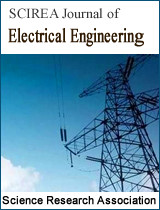Congestion Control Protocol for Future Networks (DCM+)
DOI: 199 Downloads 12928 Views
Author(s)
Abstract
This paper proposes a new approach for TCP congestion control for future data networks, which is called TCP DCM+. DCM is the previous version, which uses TCP Westwood method of estimating the available bandwidth. The aim of the new protocol is to improve the performance and stability of DCM through using the corrected algorithm in TCP Westwood+ to estimate the available bandwidth. DCM+ is rate-based end-to-end approach, which applies the modification in both phases (SS, CA) of the sender. The results of the simulations show a huge improvement of throughput, in addition to the resulting stability. Many experts believe that the future of computer technology rests in mobile computing with wireless networking. TCP DCM+ is designed to be applicable in wired, wireless and MANETs networks. The simulations executed here are done using ns-3 simulator [16].
Keywords
DCM, DCM+, Westwood+, Congestion Control, Bandwidth Estimation, Mobile Networks.
Cite this paper
Rushdi A. Hamamreh,
Congestion Control Protocol for Future Networks (DCM+)
, SCIREA Journal of Electrical Engineering.
Volume 5, Issue 5, October 2020 | PP. 115-129.
References
| [ 1 ] | R. Hamamreh, M. Bawatna, Protocol for Dynamic Avoiding End-to-End Congestion in MANETs, Journal of Wireless Networking and Communications 2014, 4(3) :67-75. |
| [ 2 ] | Sally Floyd and Kevin Fall, “Promoting the Use of End-to-End Congestion Control in the Internet”. IEEE/ACM Transactions on Networking May 3, 1999. |
| [ 3 ] | S. Mascolo, TCP Westwood: Bandwidth Estimation for Enhanced Transport over Wireless Links. ACM SIGMOBILE 7/01 Rome, Italy, (2001). |
| [ 4 ] | Y. Tian, K. Xu, N. Ansari. TCP in Wireless Environments: Problems and Solutions. IEEE Radio Communications. March 2005. |
| [ 5 ] | M. Gerla, S. Lee, TCP Westwood Performance Over Multiple Paths, (2002). Technical Report #020009. University of California, Los Angeles.90095-1596, U.S.A. |
| [ 6 ] | L. Grieco, S. Mascolo, Performance Evaluation and Comparison of Westwood+, New Reno, and Vegas. ACM SIGCOMM Computer Communication Review. Volume 34 Issue 2, pp. 25-38, April 2004. |
| [ 7 ] | S. Mascolo, E. Altman, Analysis of TCP Westwood+ in high speed networks. (2006). |
| [ 8 ] | S. Mascolo, Testing TCP Westwood+ over Transatlantic Links at 10 Gigabit/Second rate, (2005). |
| [ 9 ] | S. Mascolo, L.A. Grieco, R. Ferorelli, P. Camarda, G. Piscitelli, “Performance evaluation of Westwood+ TCP congestion control”.ResearchGate, uploaded in May 2014. |
| [ 10 ] | K. Tan, F Jiang, Q. Zhang. “Congestion Control in Multihop Wireless Networks”. IEEE Transactions on Vehicular Technology, Vol. 56, No.2, MARCH2007. |
| [ 11 ] | Simone Mangiante, Amit Navon. Congestion Control for Future Mobile Networks. CHANTS'18: Proceedings of the 13th Workshop on Challenged Networks : October 29, 2018, New Delhi, India |
| [ 12 ] | K. Jakobson, H. Hjalmarsson, N. Möller and K.H. Johansson, “Estimation of RTT and Bandwidth for Congestion Control”. European Commission through the project EURONGI and by Swedish Research Council. 2004. |
| [ 13 ] | Anuj K Gupta , Jatinder Kaur, Sandeep Kaur, “Comparison of DYMO, AODV, DSR AND DSDV MANET routing protocols over varying traffic”. IJREAS, Volume 1, Issue 2 (October, 2011). |
| [ 14 ] | V. Kanani, K. Panchal, Performance Analyses of TCP Westwood, IJEDR. 2014. |
| [ 15 ] | P. Kaushika, R. Jagdish, A survey on effectiveness of TCP Westwood in mixed wired and wireless networks, 2013. |
| [ 16 ] | Ns3 official page (www.nsnam.org). |

